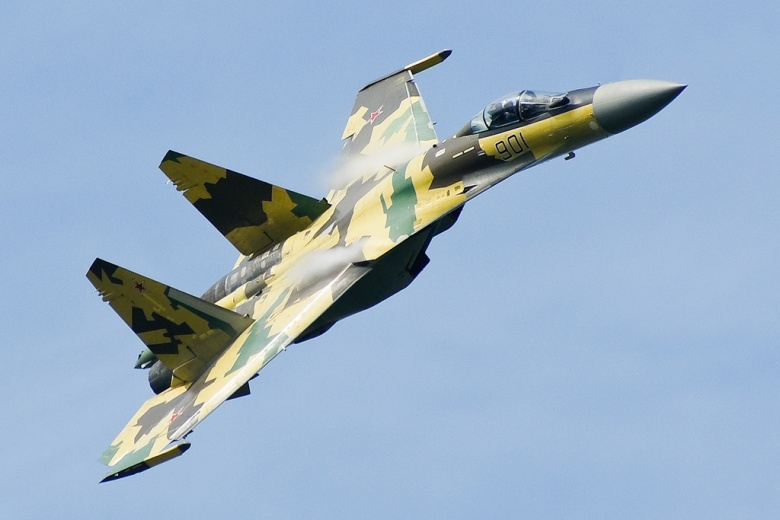Akash Surface-to-Air Missile System, India
The Akash (sky) is an all-weather medium-range surface-to-air missile (SAM) system developed in India. It provides multidirectional and multitarget area defence. The missile system was indigenously developed as part of the integrated guided-missile development programme (IGMDP). In operation from 1983 to 2007, the programme developed a range of missiles, including the Nag, Agni and Trishul missiles and the Prithvi ballistic missile.
In 2008, the Indian Air Force (IAF) introduced its indigenous SAM system after nine successful field trials. Some modifications to the Akash SAM, such as the launch platform, were made to the army version to meet mobility and gradeability requirements.
In June 2010, the Defence Acquisition Council (DAC) of India ordered Rs125bn ($2.8bn) of the army version Akash missile system for induction into the Indian Army.
Here goes the code of the element you want to show
Shenyang J-31

The Shenyang J-31, (or "FC-31 fifth Generation Multi-Purpose Medium Fighter")also known as "Gyrfalcon" , or "Falcon Hawk" by some military enthusiasts, is a twin-engine, mid-size fifth-generation jet fighter currently under development by Shenyang Aircraft Corporation. The fighter has also been referred to as "F-60" or "J-21 Snowy Owl" in some media reports.
The Shenyang J-31 (F-60) is a fifth-generation, multi-role, twin-engine stealth fighter aircraft being manufactured for the People's Liberation Army Air Force (PLAAF) by Shenyang Aircraft Corporation, an affiliate of Aviation Industry Corporation of China (AVIC). It is the second stealth fighter that China has indigenously developed after the J-20.The J-31 fighter jet is intended to provide advanced defence capabilities in close-air support, aerial bombing and air interdiction operations. It can also perform suppression of enemy air defences and can be used as a carrier-based fighter on aircraft carriers. Initial operational capability of the aircraft is expected in 2020.
Sukhoi SU-37
The Su-37 multirole, all-weather fighter aircraft demonstrator is derived from the family of aircraft based on the Su-27, which was developed in 1977 by the Sukhoi Experimental Design Bureau in Moscow and is in service with the Russian Air Force and a number of other countries. This family also includes the Su-27UB, Su-30, Su-33, Su-32FN and Su-35, and has the Nato codename Flanker. The Russian Air Force is currently operating two Su-37 aircraft.
Yasen Class Submarine
Yasen-class submarines were designed by the Malakhit Central Design Bureau, formed by the combination of SKB-143 and TsKB-16, with work on the initial design scheduled for start in 1977 and completion in 1985. Malakhit is one of the three Soviet/Russian submarine design centers, along with Rubin Design Bureau and Lazurit Central Design Bureau.
SSBN Typhoon Class (Type 941), Russia
The Typhoon ballistic missile nuclear-powered (SSBN) submarines
are the largest submarines ever to be built. They were constructed at the
Severodvinsk Shipyard, on the White Sea near Archangel.
The first of the six members of the class to be commissioned was
TK 208 in 1981, followed by TK 202 in 1983, TK 12 in 1984, TK 13 in 1985, TK 17
in 1987 and TK 20 in 1989. The submarines were stationed with the Russian
Northern Fleet at Litsa Guba.
Of the six, only TK 17 and TK 20 are operational. TK 208 was
relaunched following refit in 2002 and is being used as a trials ship. TK 12
and TK 13 are decommissioned, waiting to be scrapped.
With assistance from the United States, through the cooperative
threat reduction programme, TK 202 has had its nuclear fuel removed by US
funded processing facilities and converted into forms suitable for long-term
storage or reuse. The UK has also agreed to take part in the dismantling of
Russia's decommissioned nuclear submarines.
Project 677 Lada Class / Project 1650 Amur Class Submarines, Russia
The Project 677 Lada Class diesel-electric submarines are being
built by Admiralty Shipyard for the Russian Navy. The class is also called the
Petersburg Class, after the lead submarine.
The Lada Class succeeds the Kilo Class submarines.
The keel for the lead sub in class, Sankt-Petersburg (B-585),
was laid down in December 1997 and launched in October 2004. The submarine was
delivered to the Russian Navy in April 2010 and commissioned in May 2010.
Two submarines under construction are: Kronshtadt (B-586) - laid
in July 2005 - and Sevastopol (B-587) - laid in November 2006. The Russian Navy
plans to build a total of eight Lada Class submarines.
MiG-35 / MiG-29M OVT / Fulcrum F
The Mikoyan MiG-35 (Fulcrum-F) is a 4++ generation fighter jet and a modification of the MiG-29M. It is equipped with air-to-air and air-to-surface guided missiles, as well as the Zhuk-A radar system. The MiG-29M OVT (Fulcrum F) highly maneuverable air superiority fighter was shown for the first time in August 2005 during the MAKS Air Show outside Moscow. The single-seat fighter, also marketed for export as the MiG-35, is powered by RD-33 OVT thrust vectoring control engines. The RD-33 OVT engines provide superior maneuverability capability to the aircraft enhancing its performance in close air-to-air engagements. The unique performance characteristics of this aircraft are based on RD-33 OVT thrust vectoring control engines.
Subscribe to:
Posts (Atom)



